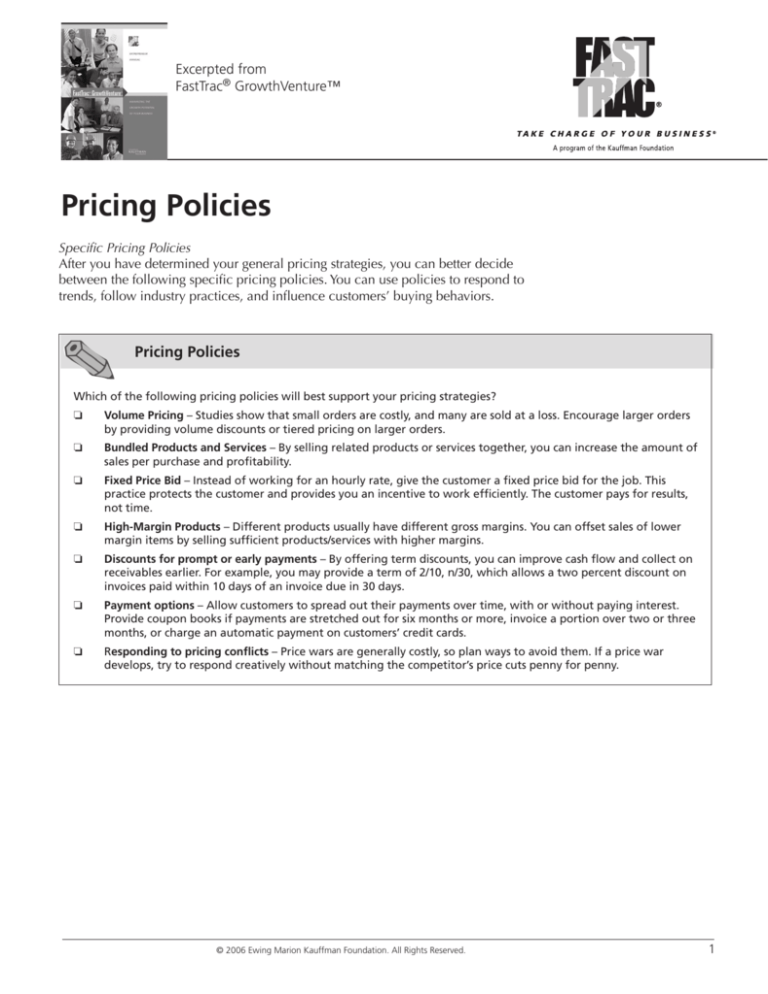
Excerpted from
FastTrac® GrowthVenture™
Pricing Policies
Specific Pricing Policies
After you have determined your general pricing strategies, you can better decide
between the following specific pricing policies. You can use policies to respond to
trends, follow industry practices, and influence customers’ buying behaviors.
Pricing Policies
Which of the following pricing policies will best support your pricing strategies?
o
olume Pricing – Studies show that small orders are costly, and many are sold at a loss. Encourage larger orders
V
by providing volume discounts or tiered pricing on larger orders.
oBundled Products and Services – By selling related products or services together, you can increase the amount of
sales per purchase and profitability.
oFixed Price Bid – Instead of working for an hourly rate, give the customer a fixed price bid for the job. This
practice protects the customer and provides you an incentive to work efficiently. The customer pays for results,
not time.
oHigh-Margin Products – Different products usually have different gross margins. You can offset sales of lower
margin items by selling sufficient products/services with higher margins.
o
iscounts for prompt or early payments – By offering term discounts, you can improve cash flow and collect on
D
receivables earlier. For example, you may provide a term of 2/10, n/30, which allows a two percent discount on
invoices paid within 10 days of an invoice due in 30 days.
oPayment options – Allow customers to spread out their payments over time, with or without paying interest.
Provide coupon books if payments are stretched out for six months or more, invoice a portion over two or three
months, or charge an automatic payment on customers’ credit cards.
oResponding to pricing conflicts – Price wars are generally costly, so plan ways to avoid them. If a price war
develops, try to respond creatively without matching the competitor’s price cuts penny for penny.
© 2006 Ewing Marion Kauffman Foundation. All Rights Reserved.






